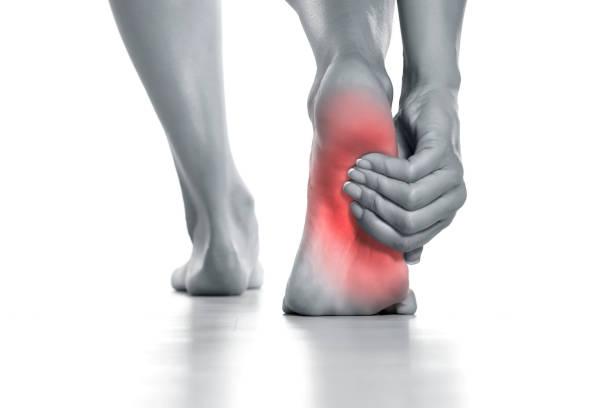Experiencing Heel Pain? This Might Be The Reason

What is the normal recovery time for foot and ankle surgery?
July 7, 2023
8 Common Foot Disorders Requiring Podiatrist’s Expertise
July 18, 2023Recognizing the cause of heel pain is the first essential step towards getting the proper treatment. Since there is no one-fit-for-all approach for treating heel pain, the underlying cause of this condition should be determined by creating a tailored course of treatment. Treating the root cause of heel pain is crucial for the pain to go away. So if you suffer from persistent heel pain and are looking to treat your heel pain in Houston, here are some things you should know.
Heel Pain Can Have Multiple Reasons
Heel pain is not a singular condition but a symptom of many other conditions. These include Achilles tendinitis, Plantar fasciitis, bursitis, and stress fractures. When seeking treatment for heel pain in Houston, these conditions will be closely evaluated since they directly affect the different parts of the foot and can cause heel pain that may feel like its in a different location of the heel.
Achilles tendonitis
This occurs when the Achilles tendon becomes strained and causes inflammation around the heel bone to the calf muscles. The cause of heel pain can be felt more along the back of the heel or just above it. The pain can worsen during or just after an activity. It begins as a mild ache after running or other sports activity. Severe pain can occur after prolonged running, sprinting, or stair climbing. The symptoms may also include tenderness or stiffness, especially in the morning, and with even mild activity
Plantar fasciitis
This is when there is strain and aggravation of the plantar fascia, the thick band of tissue that runs through the arch, connecting the heel bone to the base of the toes. Heel pain due to this condition is usually felt beneath the heel or a little closer to the arch. It can worsen when getting out of bed in the morning or moving after a long inactivity.
This is the most common cause of heel pain and mostly causes stabbing pain, usually with your first steps in the morning. It decreases as you get up and start moving but returns after long periods of standing. This condition is most common in runners and people who are overweight.
Bursitis
This is the inflammation of a fluid-filled sac that provides cushioning between bones and tendons. These fluid-filled sacs are called bursae and are commonly located at the knee, heel, base of the big toe, shoulders, elbow, and hip. The pain is usually felt along the back of the heel and gets worse with activity or when standing on your toes.
This condition mostly occurs at joints that perform frequent repetitive motions. Resting and protecting the affected joint from further trauma can treat this condition. The pain usually goes away within a few weeks with proper treatment.
Stress fractures
Stress fractures occur when the hairline cracks develop on the surface of a bone due to long periods of repetitive stress with little opportunity to recover. Stress fracture pain is usually felt along the underside of the heel and can get worse during activity.
To Conclude
Remember that the better you know the symptoms of your heel pain, the more information can be acquired in order to make a fast and accurate diagnosis. So make sure that you let the foot doctor know everything about your heel pain, including the exact location of the pain, how it feels, and when it tends to be most severe.
Featured Image Source: https://media.istockphoto.com/id/1226189541/photo/woman-holding-her-painful-foot-on-white.jpg?s=612×612&w=0&k=20&c=cHDD6bb9JsAbH-lzG-y81ZUlQZkm6Vzj2DtaTBURvsw=



